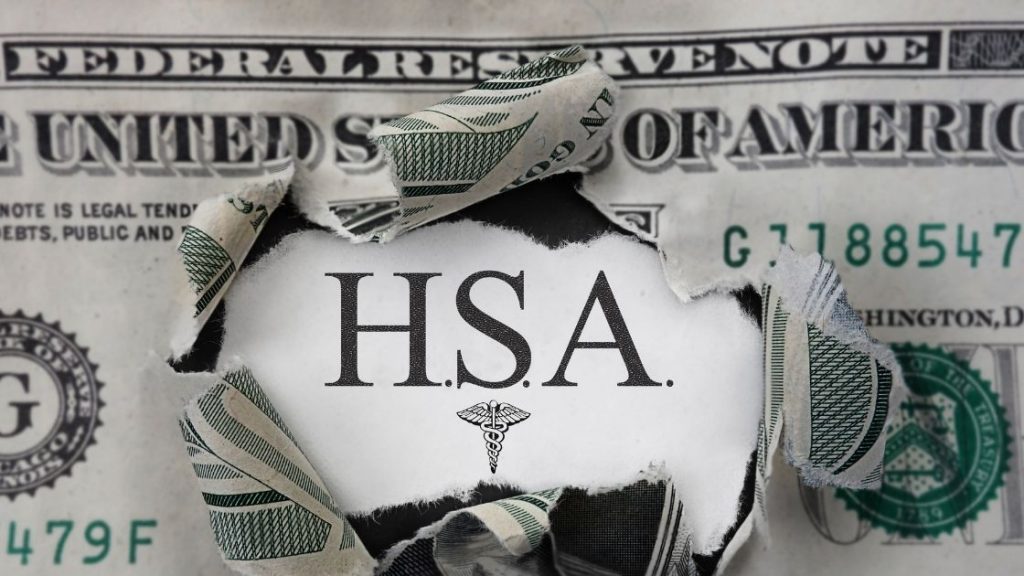If you have a 401(k), you have a powerful tool to build long-term wealth and secure a great retirement. Some of the obvious benefits include the ability to save money in a tax-advantaged way, but there are some less well-known features of the 401(k) that can allow you to really boost the benefits of this retirement vehicle.
Here are seven ways you can maximize your 401(k) benefits:
1. Take advantage of the 401(k)’s tax benefits
2. Receive the full amount of any employer match
3. Use the Saver’s Tax Credit (if you qualify)
4. Take advantage of 401(k) investment options
5. If over 50, use catch-up contributions
6. Use a Mega Backdoor Roth if available
7. In emergency, use 401(k) loan or a 401(k) Hardship Withdrawal
We’ll go into each of these benefits in detail below. It’s a lot to cover so let’s dive into it!
This post may contain affiliate links. If you click on a link and complete a transaction, I may make a small commission at no extra cost to you.
The information contained in this post is for informational purposes only. It is not a recommendation to buy or invest, and it is not financial, investment, legal, or tax advice. You should seek the advice of a qualified professional before making any investment or other decisions relating to the topics covered by this article.
Take Advantage of the 401(k)’s Tax Benefits
If you are reading this, I assume you know what a 401(k) is, but if you are not sure, check out this comprehensive summary.
There are two types of a 401(k), a “traditional” 401(k) and a “Roth” 401(k).
The traditional 401(k) allows you to contribute funds on a “pre-tax” basis. This means you save on taxes the year you contribute. Your assets also grow tax-free over time. But when you withdraw it at retirement age, the withdrawals are taxed as ordinary income.
Roth 401(k) contributions are made with “after-tax” dollars, so you do not get a tax benefit when the year your contribute. But like the traditional 401(k), your contributions are allowed to grow tax-free. When you withdraw funds from a Roth 401(k) at retirement age, those withdrawals are tax-free.
Which Is Better? Traditional or Roth 401(k)
If you think your taxes will be higher today rather than when you withdraw the funds, then the traditional 401(k) makes more sense. If you think taxes will be higher for you in retirement, then go with the Roth.
I have funds in both traditional and Roth accounts – it allows for some tax diversification and gives you greater flexibility to plan your withdrawal strategy in retirement.
Maximize Your Employer Match
I have funds in both traditional and Roth accounts – it allows for some tax diversification and gives you greater flexibility to plan your withdrawal strategy in retirement.
The tax benefits of contributing to a 401(k) are nice, but some employers offer “matching” contributions to boot. There are many variations on how such matches are calculated, but the main idea is that if you contribute to your 401(k), your employer will match your contribution up to a certain limit.
For example, if you contribute $500 each month, then your employer may match 50% of that amount to your 401(k) so that you wind up with $750 in the account. This is a simple example and there are typically caps on how much an employer will match.
But regardless of what those caps are, you should contribute as least enough to get the full employer match. Otherwise you are leaving free money on the table.
Bear in mind that employer contributions cannot be credited to a Roth 401(k), so they will be placed into a traditional 401(k). This gives you the tax diversification I mentioned before, so may not be a bad thing.
In any event, your consistent contributions to a 401(k) along with matching contributions and tax-free growth over time, should provide you some pretty good results, assuming you make the right investments in your 401(k).
Just how big of an impact can this match have?
Using the example above, if you did not have the match and invested $500 per month for 30 years at an 8% annual return, you would wind up with $704,275. With the match, you would have $1,056,403.
That is a massive amount of free money! Don’t turn down free money.
Take Advantage of the Saver’s Tax Credit
If you meet certain income limitations, the IRS will give you even more incentive to contribute to your 401(k). This is called the Saver’s Tax Credit and it permits you to receive a refund or reduce your tax bill based on the first $2,000 (or $4,000 if married filing jointly) that you contribute to your 401(k), IRA, or another qualifying retirement plan.
The exact amount of the reduction or refund will depend on your income. This IRS page has a chart showing you how it is calculated.
Take Advantage of 401(k) Investment Options
Your 401(k) should offer you a variety of investment options. You may be able to choose among various stock funds, bond funds, REITs, and other asset classes.
How you allocate your money across these investment options is an important decision and will have a big impact on the performance of your 401(k) over time.
Most people do not have the time or desire to study what they should invest in. Enter the Target Date Fund.
Most 401(k)s now offer this option. Basically, these funds have done the work for you and have different asset allocations based on the “target” year of retirement.
So if you plan on retiring in 2050, then a 2050 Target Date Fund will have an asset allocation that the fund manager believes is appropriate for someone who is retiring that year. Given the length of time until 2050, the asset allocation will likely be mostly in stocks as opposed to bonds and other less volatile investments.
Target Date Funds are a “set it and forget it” option. That’s appealing to many people and may be right for you.
One of the drawbacks to this option, though, is that Target Date Funds may have higher fees and expenses than what you may pay if you hand select your investments.
If you are knowledgeable and want more control over your asset allocation, a personalized approach may be better. There are many asset allocation options out there recommended by experts, but I like Ray Dalio’s all-weather portfolio as a pretty conservative approach.
It’s what I use for my IRA investing (because my 401(k) investment options are unfortunately not diverse enough to replicate the all-weather portfolio). There is also the even simpler 60/40 split between stocks and bonds that many people use as a default setting for long-term investing.
If all of this is a bit confusing, I get it. If you are looking for some help, there are online robo-advisors who specialize in 401(k) investments. They analyze your current 401(k) investments and offer recommendations for optimization
Blooom has financial planning software that analyzes your 401(k) investments and offers a customized investment strategy for you.
According to their website, they offer full service 401(k) and IRA management, including optimizing fund selection and minimizing fees (remember those expense ratios I mentioned earlier?).
If you are interested, check them out.
Maximize Your 401(k) Contributions
Age 50 Catch-Up Contributions
As mentioned at the start, there are two ways you can increase your contribution limit on your 401(k). The first is age-based. In the year that you turn 50, you can contribute up to $26,000 (up from $19,500 before that). Source: IRS
As mentioned at the start, there are two ways you can increase your contribution limit on your 401(k). The first is age-based. In the year that you turn 50, you can contribute up to $26,000 (up from $19,500 before that). Source: IRS
Mega Backdoor Roth
The other way is through a Mega Backdoor Roth. If your 401(k) allows after-tax contributions (apart from contributions to a Roth 401(k)) and allows either in-service withdrawals or in-plan rollovers to a Roth 401(k), then you may be able to use this option.
You can simply ask your employer these questions to find out if this option is available to you.
As of 2020, this strategy allows you to potentially contribute up to an additional $37,500 (minus any matching contributions).
Source: Nerdwallet
Access Your 401(k) Funds in an Emergency
401(k) Loans
You may be able to take out a loan against balances in your 401(k) to cover any expenses when you are in a bind. These withdrawals would be tax and penalty-free. The cool aspect of this option is that you are borrowing money from yourself, so you are paying yourself back (with interest).
Not all employers allow you to do this and there are limitations on how much you can borrow (the lesser of 50% of your assets in the 401(k) or $50,000). If you pursue this option, one thing you need to know is that you must pay back the entire loan balance within 60 days if you leave your job.
If you don’t, the withdrawn amount will be subject to taxes and penalties if you are under 59.5 years old.
If you want a fuller discussion of this, check out this article.
Obviously, borrowing from your 401(k) may not be ideal from a retirement planning viewpoint because that money should be dedicated for retirement. But if you are facing a real crisis and there is no other option, it is nice to know that you can draw on this money as needed.
401(k) Hardship Withdrawal
Alternatively, you can tap funds in your 401(k) by applying for a “hardship withdrawal.” These funds may be used to cover certain hardship scenarios, including buying a house, covering certain medical or tuition expenses, and other hardship related costs.
If you are approved, you can withdraw those funds without paying penalties, but you still must pay taxes on the withdrawal. This article discusses hardship withdrawals, including what counts as a hardship withdrawal and other details relating to this 401(k) feature.
There are a lot of regulations and potential financial and tax consequences associated with this type of withdrawal, so I would be careful before pulling the trigger on this (and, as with any of these strategies, you should definitely consult with your tax and financial advisors).
Conclusion
A 401(k) with a match is a powerful, tax-efficient way to save for retirement and can be among the biggest financial benefits that an employer offers to its employees. I hope these tips allow you to take full advantage of all that your 401(k) has to offer.
If you have questions about how to maximize other employer benefits, we have a series of articles dedicated to discussing benefits available to employees working in corporate America.

